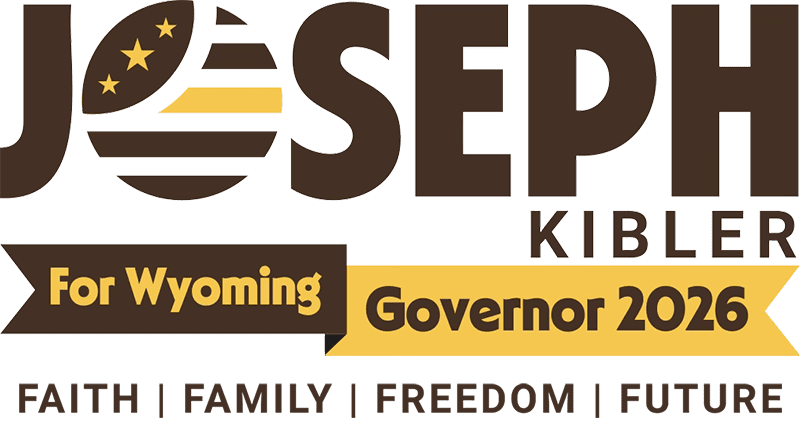Parents are the first and primary decision-makers for their children. Schools exist to serve families—not the other way around. In the Wyoming governor 2026 race, I’m focused on a simple principle: parental rights are non-negotiable, and transparency should be so clear you don’t need a lawyer to read it.
This is about Be Something Different in education—less paperwork, more clarity, and pathways that actually help kids thrive.
1) Curriculum transparency you can actually read
Families deserve to know what is taught, when, and how—without chasing links. The fix is simple and lean:
- A plain-English course outline per class (scope, sequence, core materials) posted in one place.
- An easy calendar view showing upcoming units and assessments.
- Syllabi and reading lists posted before the term begins and updated if changes occur.
No new bureaucracy—just organizing what already exists so parents can make informed decisions.
2) Explicit content has no place in our schools
Wyoming classrooms should be safe, age-appropriate spaces for learning—period. All sexually explicit material is removed from K–12 schools (libraries, classrooms, and digital portals).
- Bright-line rule: No graphic sexual content, pornographic imagery, or explicit depictions in curriculum or library holdings.
- Plain-English review: A short, public list of criteria—so parents, teachers, and librarians can spot and remove material quickly.
- Age-appropriate alternatives: When a work has educational value but contains mature sections, assign clean editions or vetted excerpts.
- Transparency without drama: Schools publish an up-to-date catalog of instructional materials and library holdings; parents can view it in minutes.
- Local accountability: A simple, time-bound process to flag and remove explicit items—no new bureaucracy, just clear standards and swift action.
Bottom line: Schools teach academics and character; families handle mature topics at home. That’s how we Be Something Different—protect kids, support teachers, and keep classrooms focused on learning.
3) Real choices that work on the ground
Families have different needs. Choice should be simple, local, and practical:
- Dual credit and CTE pathways that lead to paychecks or college credit—students can see the map, not guess it.
- Shared services where it helps (transportation, specialized courses), keeping the focus on students, not systems.
This is choice without a maze—clear options, clear steps, and visible results.
4) Mastery that matters: reading and math first
Back to the Studs: Values, Mastery, and Real Learning
- Three core priorities: Reading. Writing. Arithmetic. Every schedule, hire, and dollar points to these first. Phonics-first reading, math fact fluency, daily writing.
- Mastery made visible (not test-prep): Grade-level targets posted in plain English with quick practice links. Weekly 2–5 minute “check-ins” replace marathon test drills.
- Catch-up windows during the year: Short, scheduled tutoring sprints (20–30 minutes, 3x/week) so kids don’t wait until summer to get help.
- Parent snapshots that make sense: A one-screen update: On Track / Needs Attention / Next Step—no jargon, just what to practice tonight.
- Interest-based learning that earns credit: After the core, students choose project blocks (ag & ranch tech, trades, coding, arts, entrepreneurship). Clear rubrics tie projects back to reading, writing, and math.
- Write every day, count every day: Daily quick-writes and number talks across subjects. Science, history, and shop class use writing and math, not sidestep them.
- Phones down, focus up: In-class learning time is protected; devices parked so attention stays on the work.
- Lean assessments, real feedback: Replace test-prep assemblies with short skill checks and immediate corrections. Show growth in weeks, not in a spring data dump.
- Teacher time protected: Simple templates for lessons, mastery checks, and parent notes. Fewer meetings, more teaching.
- Local reading lists with values: Age-appropriate, clean editions where needed. Character, grit, and honesty woven into core texts—schools teach academics and virtue; families handle mature topics at home.
Be Something Different: Build the foundation—strong readers, clear writers, confident problem-solvers—then let curiosity take it further.
5) Teachers deserve clarity, too
Good teachers want parents involved. Simple, consistent templates (course outlines, opt-in forms, progress snapshots) save teachers time and reduce confusion. When expectations are clear, classrooms are calmer and communication is easier.
6) Light-touch transparency dashboards
Families should be able to see how a school is doing without wading through spreadsheets:
- Attendance, reading and math proficiency trends, and post-grad pathways in a small, public snapshot.
- Keep it lean—a few meaningful metrics, updated on a predictable cadence.
Why this helps Wyoming
- Parents: clarity and choices you can act on—no scavenger hunts.
- Students: reading, math, and pathways that connect to real opportunities.
- Teachers: fewer surprises and fewer emails because expectations are posted up front.
- Communities: a culture that trusts families and lets great schools shine.
This is how we Be Something Different: clear rights, open information, and choices that work—without growing government.
FAQs
Q1: Does transparency add work for teachers?
It reduces work when done right. Reusable templates for outlines, calendars, and reading lists prevent one-off emails and last-minute scrambles.
Q2: What if my student can’t transfer due to capacity?
Open enrollment should be capacity-honest with posted seat counts and timelines. When seats aren’t available, families still get access to shared services or virtual options for specific courses.
How is “sensitive content” decided?
Bright-line rule: All sexually explicit material is removed from K–12 (libraries, classrooms, and digital portals). Schools use a plain-English criteria list (no graphic sexual depictions, pornographic imagery, or explicit scenes). A public, searchable catalog of instructional materials and library holdings keeps everything transparent, and there’s a simple, time-bound process to flag and pull anything that slips through. When a classic work has value but mature sections, schools assign clean editions or vetted excerpts—academics first; families handle mature topics at home.
Q4: Will this require new programs or bigger budgets?
No. This plan organizes existing information, uses simple templates, and aligns timelines—light touch, clear results.
Q5: How do we measure success?
Reading and math on-grade-level rates, on-time progress snapshots to parents, participation in CTE/dual credit, and parent satisfaction surveys that take under two minutes to complete.

